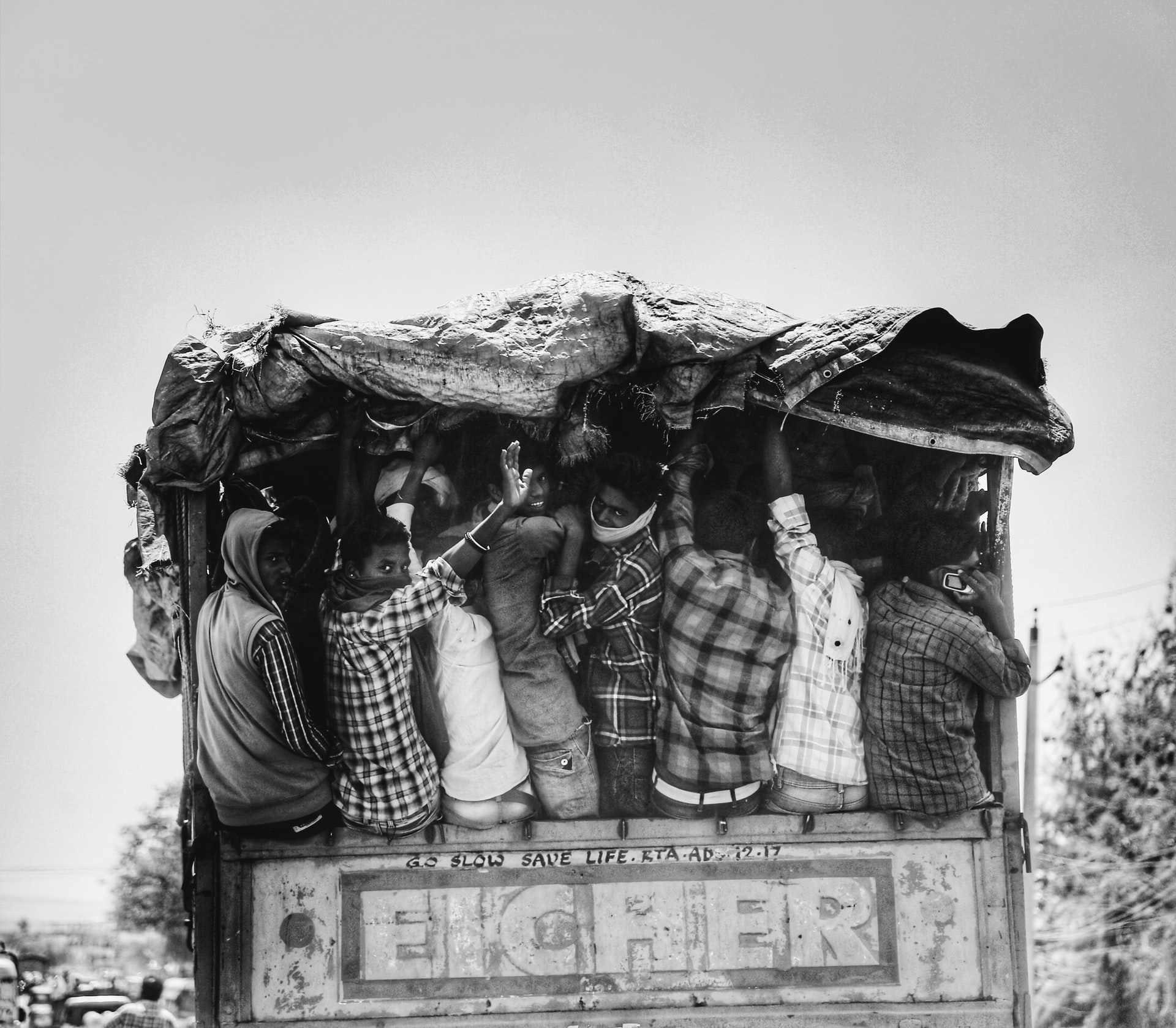Rural life in India is deeply segmented and simultaneously regulated through inter and intra-caste intimacy. Due to the ethics and regulations of caste, villages may make a difficult socio-political space for the possibilities of cosmopolitanism and genuine civility. Urban India however shows signs of Hindu Cosmopolitanism. Suryakant Waghmore (Indian Institute of Technology, Mumbai) argues that Hindu cosmopolitan’s claim to host a critical form of cosmopolitanism (which challenges westernised ways of individualism, but retains caste as a form of community) is visible at the heart of urban life in India. Hindu cosmopolitanism however obstructs spontaneity, sociability and genuine alterity that make an inclusive community possible.
Caste and Cosmopolitanism
A critical view of cosmopolitanism in contemporary times could be broadly understood as an elitist, western, bourgeois and liberal project that provides moral and political meaning to lives of present-day privileged elites who can cross national boundaries across the East and the West with ease. Cosmopolitanism, however, has deeper historical roots with moral meanings and implications. For Stoic philosophers, a lack of reason amongst humans was tantamount to slavery, and use of reason alone would lead us into being citizens of the world. Neither status nor states could impinge upon our natural inclination toward cosmopolitanism. For socialist writers, likewise, cosmopolitanism was linked to bourgeoisie and enlightenment ideas of humanism.
In my work I draw on from Hall, Calhoun, Pollock and Chatterjee to desist from the top-down modes of studying and understanding cosmopolitanism – as an extension of liberal ideas of global citizenship. I contribute to the diverse version of cosmopolitanisms that are soaked in local ethics, politics and urbanisms of the East. One natural place to look for cosmopolitanism is in cities and urban spaces as sites of openness and accommodation where co-existence of varied cultures, races and classes was both possible and necessary. How did cosmopolitanism configure and consolidate in cities of the non-western world?
City life could be seen as an ideal space for practicing the ethics of alterity based on the centrality of free flowing dialogue, not guided by instrumental reasoning central to modernity or communal bonds tied to traditionalism – thus producing a sociability through spontaneity and impulse which is artistic, free flowing and based on pure humanity (Simmel 1949). Perhaps for this reason, Dr. Ambedkar called for ex-untouchables to leave the villages for cities, as caste construed a deep challenge to the possibilities of local cosmopolitanism and civility in rural life. For subalterns, cities constitute spaces of emancipation from the tyranny of rural social order. Urban Margins could also construct subaltern-cosmopolitanism as politics from below.
To explore the multiple meanings and possibilities of urban cosmopolitanism, we may also need to look for cosmopolitanism beyond the compulsions and hard lives of poor and excluded populations. My research has examined the meaning of city spaces for the communities considered higher and pure in contemporary times. As part of a larger research project funded by ICSSR on Withering Castes in Urban Locales, I also studied caste associations of the pure and privileged in Mumbai to understand how they negotiate and construct cosmopolitan urbanism. Are these caste associations anti-cosmopolitan, or do they promote a different form of cosmopolitanism?
Caste in its plasticity took the form of guilds and trade unions with urbanization and industrialisation. Caste in Bombay thrived under the British as the colonial government maintained their policy of non-interference in indigenous religion. Bombay saw reorientation of primordial groups (castes and religious sects) as a response to ideological and political changes and a new form of urban leadership that had primordial linkages. Caste groups who had better jobs used ties of caste and kinship to fill future job openings and solidify their groups position. The flip-side of this is that caste also influences economic inequalities and exclusion in labour markets. Caste has also historically shaped the organisation of residential space, especially at the village level, and it appears to continue to do so in contemporary urban India.
In a recent study, Coffey et al. speak of ‘explicit prejudice’, but does the presence of caste in cities necessarily mean the end of urban cosmopolitanism? Could the presence of caste as community also point to ‘traditional urbanism and structural continuity’ between the rural and the urban? Does caste as community also provide a social and moral base for urban life-worlds and cosmopolitanism in India?
The Making of Urban Hindu Cosmopolitanism
Our study of caste associations in Mumbai included a survey and analysis of webpages of 95 caste associations, interviews and group discussions with leaders and members of 25 caste associations, analysis of documents and occasional observation of meetings and gatherings were also sources of data. Drawing on this research, I argue that cosmopolitanism while being a necessity of life in a metropolis, results from the compulsion as well as the seductions that accompany life in a megacity.
The political and economic consequences of absolute segmentation are tremendous in modern times as they can freeze technical innovation, and perpetuate the ritualised ‘tyranny of cousins’. Caste as community is presented as a social solidarity of ‘choice’ and not birth by caste associations to enable individuals negotiate urbanism and indulge in consumptive [soft] cosmopolitanism. Some interventions of caste associations may seem anti-cosmopolitan as they mostly encourage horizontal-alterity, I suggest however that cosmopolitanism should not necessarily be judged through parameters of inclusion alone since (some) exclusion may well be part of Hindu Cosmopolitanism that drives postcolonial urbanism in India.
Caste associations try to provide roots to freely moving individuality and alterity – in a non-violent form. Such regulation is not absolute closure and is in keeping with the idea of co-existence of diverse communities. In latent forms, however, caste associations try to dissuade those who may want to move beyond caste for love, sympathy and compassion. Caste associations are thus contra-dialogue and alterity, as they affect the possibilities of reciprocity, spontaneity and free flowing sociality in the city.
Strategies used by these associations encompass both material and cultural spheres. For the caste associations of the privileged, the city holds no promise of liberation and equality. The golden age of caste as community is lost or is seen as eroding radically. Caste associations work towards forming a newer urban identity from within caste groups, thus working towards the difficult task of holding together the inner solidarity of very jati itself in ethical ways under the rubric of urban Hindu cosmopolitanism. They thus aid in constructing soft cosmopolitanism that downplays alterity and helps negotiate the moral density of urban spaces. As opposed to Durkheim’s organic solidarity that privileges solidarity of individuals – caste as community continues to provide a foundational basis for cosmopolitan urbanism and Hindu cosmopolitanism.
Hindu cosmopolitanism and the impossibility of alterity
Caste associations have the morals of a communal collective that can help individuals thrive economically in urban areas; do they generate cosmopolitan values and practices for urban living that could help individuals move beyond caste for love, friendship, sympathy and greater civility? The Hindu cosmopolitanism of caste associations points to both the limits of liberal-cosmopolitanism as an ideal, and the lack of alterity as a necessity in urban publics that Hindu cosmopolitans seek to constitute. Hindu cosmopolitans too claim to host critical cosmopolitanism in their moves that challenge westernised ways of individualism to retain community at the heart of urban indulgence. They however obstruct spontaneity, sociability and genuine alterity that make a dialogical community possible.
Hindu cosmopolitanism proposes an alternative universal urbanism that values distinction, social closure along with material indulgence and mobility. It is identical to soft or consumptive cosmopolitanism but proposes an alternative ethical and moral positioning that celebrates closure as resistance against western and other local/lower varieties of cosmopolitanisms. Hindu cosmopolitanism thus helps us develop a new ideal-type of cosmopolitanism that is void of alterity.
Broadly, as hierarchy becomes distinction and difference, and caste becomes community, caste associations continue to provide roots to free moving individuals into their respective communities through invoking community pride and history. Hindu cosmopolitanism does not seem to lack politeness, order, peace and other elements that are essential for urban cosmopolitanism. Paradoxically, these co-exist with elements of vulgarity, which affect the possibilities of individual self-realisation in the city by making the individual inward-looking for morals and sympathy. Hindu cosmopolitanism, in this sense, lacks virtue of civility, and may produce urban modernity void of alterity. It however constitutes an important and dominant form of cosmopolitanism in urban India.
The author would like to thank Amritha Mohankumar, Rohini Srikumar, Shadab Arab, Sristhee Sethi and Shankar Kokane for providing research assistance on ICSSR. A longer version of the paper is available at South Asia
This article gives the views of the author, and not the position of the South Asia @ LSE blog, nor of the London School of Economics. Featured image: Traffic Jam, India. Credit: Free-Photos, Pixabay.







